In this Introduction, you will learn what will be taught in this course and benifits of this course.
- What is Programming?
- What is Coding?
- Python Library
- Python Modules
- Python Webframework
- Flavours of Python
- What can Python do?
- Why Python?
- Python Syntax compared to other programming languages
- Python Installation
- The print statement
- Comments
- Python Data Structures & Data Types
- String Operations in Python
- Python keywords
- Python Variables
- Python Type Conversions
- Simple Input & Output
- Arithmetic operators
- Assignment operators
- Comparison operators &Logical operators
- Identity operators
- Membership operators & Output
- Simple Output Formatting
- Indentation
- The If statement and its’ related statement
- An example with if and it’s related statement
- Else
- Nested If
- Short Hand If
- Short Hand If else & Continue
- Examples for Conditional Statements
- Indentation
- The for statement and its’ related statement
- An example with for and it’s related statement
- While
- Nested for
- Nested While
- Examples for Looping Statements
- Indentation
- The Break statement and its’ related statement
- An example with Break and it’s related statement
- Continue
- Pass
- Examples for Jumping Statements
- String object basics
- String methods
- Splitting and Joining strings
- String format functions
- List object basics
- List methods
- List as Stack and Queues
- List comprehensions
- Introduction to Tuples
- Tuples with built-in functions
- Tuple operations
- Introduction to Sets
- Sets with built-in functions
- Set Operations
- Set with functions
- Introduction to Dictionary
- Dictionary with built-in functions
- Dictionary with functions
- Defining a function
- Calling a function
- return statement
- Difference between return and print
- Arguments
- Parameters
- Keyword arguments
- Arbitrary argument
- User defined functions
- Nested functions
- Functions with real time examples
- Introduction to Classes
- Creation of Classes
- Real time examples of Classes
- Creation of Objects
- init
- self keyword
- super keyword
- Inheritance
- Types of Inheritance:
- Single Inheritance.
- Multiple Inheritance.
- Multi-Level Inheritance.
- Hierarchical Inheritance.
- Polymorphism:
- Method overloading
- Method overriding
- Encapsulation
- Private
- Public
- Protected
- Data Abstraction
- Abc class
- Abstract method
- Realtime example of Data Abstraction
- Introduction to Numpy
- Numpy Installation
- NumPy – Ndarray Object
- NumPy – Data Types
- NumPy – Array Attributes
- NumPy – Array Creation Routines
- NumPy – Array from Existing Data
- Array From Numerical Ranges
- NumPy – Indexing & Slicing
- NumPy – Advanced Indexing
- NumPy – Broadcasting
- NumPy – Iterating Over Array
- NumPy – Array Manipulation
- NumPy – Binary Operators
- NumPy – String Functions
- NumPy – Mathematical Functions
- NumPy – Arithmetic Operations
- NumPy – Statistical Functions
- Sort, Search & Counting Functions
- NumPy – Byte Swapping
- NumPy – Copies & Views
- NumPy – Matrix Library
- NumPy – Linear Algebra
- Introduction to Pandas
- Pandas Installation
- Python Pandas – Series
- Python Pandas – DataFrame
- Python Pandas – Panel
- Python Pandas – Basic Functionality
- Descriptive Statistics
- Function Application
- Python Pandas – Reindexing
- Python Pandas – Iteration
- Python Pandas – Sorting
- Working with Text Data
- Options & Customization
- Indexing & Selecting Data
- Statistical Functions
- Python Pandas – Window Functions
- Python Pandas – Date Functionality
- Python Pandas – Timedelta
- Python Pandas – Categorical Data
- Python Pandas – Visualization
- Python Pandas – IO Tools
- Matplotlib
- Descriptive and inferential Statistics
- Sampling Methods
- Types of Variables
- Independent and dependent variables
- Variable Measurement Scales
- Frequency Distribution and Cumulative Frequency Distribution
- Bar Graphs and Pie Charts
- Histograms and stem & leaf plots
- Arithmetic Mean for samples and populations
- Central Tendency
- Variance and Standard deviation for Population and sample
- Percentiles and Quartiles
- Inter Quartile Ranges and Box Plots
- Outliers in data
- Skewness for the data
- The normal curves
- Z-scores and z-test for the data
- Basics of probability
- Addition Rule
- Multiplication Rule
- Permutations
- Combination
- Discrete and Continuous Random Variables
- Discrete probability distribution
- Probability Histogram
- Mean and Expected values of discrete random variables
- Variance and standard deviation of discrete random variables
- Binomial distribution
- Normal distribution
- Quadrants
- Pearsons correlation
- Hypothesis testing with Pearson’s r
- Spearman correlation
- Central Limit theorem
- Sample proportions
- Confidence intervals about the mean, population, standard deviation
- NULL and alternative Hypotheses
- Type I and Type II Errors
- One-Tailed and Two-Tailed Tests
- What is Data?
- Difference between CPU and GPU
- Parallel and sequence processors
- How data will be arranged in the axis
- Types of machine learnings
- What is classification?
- What is regression?
- What is clustering?
- Performance metrics
- What are errors?
- What are all the libraries in Machine Learning?
- Knowing about Tensorflow, Keras, Scikit-Learn, etc.
- Explorative Data Analysis
- Bias and variance
- Linear Regression Maths
- Linear Regression building from scratch without libraries
- Linear Regression Building with Libraries (Scikit Learn)
- Maths for the Mean Squared Error, Squared Error, Absolute Squared Error.
- Writing Code from scratch for Mean Squared error
- Writing Code from scratch for Squared error
- Writing Code from scratch for absolute Squared error
- Logistic Regression Maths
- Logistic Regression building from scratch without libraries
- Logistic Regression Building with Libraries (Scikit Learn)
- Maths for the Accuracy, Precision, Recall, F1-Score
- Writing Code from scratch for Accuracy
- Writing Code from scratch for Precision
- Writing Code from scratch for Recall
- Writing Code from scratch for F1-Score
- Writing code for all the metrics using sklearn (MSE, SE, Accuracy, Precision, etc..)
Decision Tree
- 1. Introduction to Decision Trees
- Definition and concept of decision trees
- Advantages and disadvantages of decision trees
- Applications in classification and regression
- 2. Building a Decision Tree
- Concept of root node, internal nodes, and leaf nodes
- Splitting criteria and recursive partitioning
- Measures of impurity:
- Gini Index
- Entropy and Information Gain
- Gain Ratio
- Chi-square
- 3. Decision Tree Algorithms
- ID3 (Iterative Dichotomiser 3)
- C4.5 and C5.0 algorithms
- CART (Classification and Regression Tree)
- 4. Overfitting and Pruning
- Causes of overfitting in trees
- Pre-pruning (early stopping)
- Post-pruning (reduced error pruning, cost complexity pruning)
- 5. Handling Different Data Types
- Continuous vs categorical attributes
- Missing value handling
- Feature selection importance
- 6. Evaluation of Decision Trees
- Confusion matrix
- Accuracy, precision, recall, F1-score
- ROC and AUC
- 7. Implementation
- Decision Tree using scikit-learn
- Visualizing the tree structure
- Case study: Classification problem (e.g., Titanic dataset)
Random Forest
- 1. Introduction to Ensemble Learning
- Definition and concept of ensemble methods
- Types: Bagging, Boosting, Stacking
- Why ensemble learning improves accuracy
- 2. Random Forest Basics
- Concept of Random Forest as an ensemble of decision trees
- Working principle and architecture
- Bootstrapping and feature randomness
- 3. Random Forest Algorithm
- Steps to build a Random Forest
- Out-of-bag (OOB) error estimation
- Feature importance calculation
- 4. Hyperparameter Tuning
- Number of trees (n_estimators)
- Max depth and min samples split
- Criterion (gini, entropy)
- Max features and bootstrap parameters
- 5. Handling Overfitting and Bias
- Bias-variance tradeoff in Random Forest
- Comparison with single decision tree
- Techniques to improve model generalization
- 6. Evaluation Metrics
- Classification metrics: Accuracy, Precision, Recall, F1-score
- Regression metrics: RMSE, MAE, R² score
- Feature importance visualization
- 7. Implementation
- Random Forest using scikit-learn
- Feature importance and visualization
- Case study: Predictive analytics using Random Forest
- What is Perceptron?
- Neurons in humans and AI?
- What is a single layers perceptron?
- Neural Networks
- Hidden Layers
- Weights and bias
- Neural networks maths behind it
- Tensorflow and Keras introduction
- Building neural networks with TensorFlow
- Activation functions
- Gradient descent algorithms
- Feedforward network
- Backpropagation
- Error and accuracy
Artificial Neural Networks (ANN)
- 1. Introduction to Neural Networks
- Definition and motivation of ANN
- Biological neuron vs Artificial neuron
- Applications of neural networks in AI and ML
- 2. Basic Concepts
- Structure of a neuron: weights, bias, activation function
- Types of activation functions: Sigmoid, Tanh, ReLU, Leaky ReLU, Softmax
- Network architectures: Single-layer and Multi-layer perceptrons
- 3. Learning in Neural Networks
- Supervised, unsupervised, and reinforcement learning
- Cost/loss functions and gradient descent
- Backpropagation algorithm (step-by-step working)
- 4. Training and Optimization
- Batch vs Mini-batch vs Stochastic gradient descent
- Learning rate scheduling and optimizers (SGD, Adam, RMSProp)
- Overfitting and underfitting concepts
- Regularization techniques: Dropout, L1/L2 regularization, early stopping
- 5. Deep Neural Networks (DNN)
- Concept of deep learning and hidden layers
- Vanishing and exploding gradient problems
- Batch normalization
- Introduction to frameworks: TensorFlow, Keras, PyTorch
- 6. Applications of ANN
- Image classification and pattern recognition
- Medical diagnosis, speech recognition, financial forecasting
- Case study using Python implementation
Recurrent Neural Networks (RNN)
- 1. Introduction to Sequential Data
- Difference between feed-forward and recurrent networks
- Understanding time series and sequence modeling
- Applications: NLP, speech recognition, sentiment analysis
- 2. Architecture of RNN
- Structure and working of a recurrent neuron
- Forward and backward propagation through time (BPTT)
- Exploding and vanishing gradient problems in RNNs
- 3. Types of RNNs
- One-to-One, One-to-Many, Many-to-One, and Many-to-Many models
- Bidirectional RNNs
- Deep RNNs
- 4. Advanced RNN Architectures
- Long Short-Term Memory (LSTM) networks – architecture and gates
- Gated Recurrent Units (GRU) – architecture and differences from LSTM
- Comparison: Vanilla RNN vs LSTM vs GRU
- 5. Training and Optimization
- Truncated BPTT
- Gradient clipping
- Dropout in RNNs
- Regularization and tuning parameters
- 6. Applications of RNNs
- Language modeling and text generation
- Machine translation
- Speech-to-text conversion
- Stock market prediction
- Practical implementation using Keras or PyTorch
- What is Corpus?
- What are Tokens?
- What are Engrams?
- What is Tokenization?
- What is White-space Tokenization?
- What is Regular Expression Tokenization?
- What is Normalization?
- What is Stemming?
- What is Lemmatization?
- Part of Speech tags in NLP
Transformers Core Concepts (NLP)
- 1. Embeddings
- Concept of word embeddings in NLP
- Difference between one-hot encoding and embeddings
- Word2Vec, GloVe, and FastText overview
- Positional embeddings in Transformers
- How embeddings capture semantic meaning
- Tokenization and subword embeddings (BPE, WordPiece)
- Visualization of embedding spaces
- 2. Encoder
- Purpose of the encoder in Transformer architecture
- Input processing using embeddings and positional encodings
- Self-attention mechanism within encoder layers
- Layer normalization and residual connections
- Feed-forward neural network after attention
- Stacking multiple encoder layers for deeper context
- Output representations for downstream NLP tasks
- 3. Decoder
- Role of the decoder in sequence generation
- Masked self-attention to prevent information leakage
- Encoder-decoder attention for contextual understanding
- Feed-forward layers and normalization
- Token prediction using linear + softmax layer
- Autoregressive text generation process
- Applications in translation, summarization, and dialogue
- 4. “Attention Is All You Need” Paper
- Introduction to the 2017 Vaswani et al. paper
- Motivation: Overcoming RNN and LSTM limitations
- Key innovations introduced:
- Self-attention mechanism
- Positional encoding
- Multi-head attention
- Encoder-decoder parallel processing
- Architecture details and training process
- Results on translation tasks (WMT 2014 English-German, English-French)
- Advantages: Parallelism, scalability, interpretability
- Foundation for modern NLP models (BERT, GPT, T5, etc.)
- 1. Embeddings
- Prompt Engineering
- Prompt Structure
- Prompt Components
- Zero-shot Prompting
- Few-shot Prompting
- Chain-of-thought Prompting
- Prompt Templates
- Prompt Variables
- Best Practices
- Common Pitfalls
- Prompt Testing
- Iteration Strategies
- Introduction to LangChain framework
- Installation and setup
- LangChain architecture overview
- Components: Models, Prompts, Chains, Agents
- Connecting different LLM models (OpenAI, Claude, Llama)
- PromptTemplates and their types → Output parsers
- Model parameters (temperature, tokens, etc.)
- Prompt composition techniques
- Summarizing: Single vs multi-document, extractive vs abstractive
- Inferring: Sentiment analysis, topic extraction, entity recognition
- Transforming: Translation, format conversion, tone adjustment
- Expanding: Content generation, creative writing, email drafting
- ConversationBufferMemory
- ConversationSummaryMemory
- ConversationBufferWindowMemory
- Entity memory
- Storing and retrieving conversation context
- LLMChain basics
- Sequential chains
- Router chains
- MapReduce chains
- Combining multiple chains
- Custom chain creation
- Document loaders and text splitters
- Vector stores and embeddings → Retrieval methods
- RAG (Retrieval Augmented Generation)
- Building a simple QA bot
- Source citation and context management
- Conversational flow design
- Context management in chat
- Multi-turn conversation handling
- Personality and tone customization
- Error handling and fallbacks
- Streaming responses
- What are agents and when to use them
- Agent types (ReAct, OpenAI Functions, etc.)
- Tools and toolkits
- Custom tool creation
- Agent execution and debugging
- Agent memory and state management
- Prompt evaluation metrics
- Response quality assessment
- Cost optimization strategies
- A/B testing prompts
- Debugging LangChain applications
- Performance monitoring
- OpenAI
- 1. Introduction
- 2. API Call and Body Structure
- 3. Limits / Cost
- 4. Advantages / Disadvantages
- 5. Fine Tuning
- Llama
- 1. Introduction
- 2. API Call and Body Structure
- 3. Limits / Cost
- 4. Advantages / Disadvantages
- 5. Fine Tuning
- Claude
- 1. Introduction
- 2. API Call and Body Structure
- 3. Limits / Cost
- 4. Advantages / Disadvantages
- 5. Fine Tuning
- DeepSeek
- 1. Introduction
- 2. API Call and Body Structure
- 3. Limits / Cost
- 4. Advantages / Disadvantages
- 5. Fine Tuning
- 1. Model Download
- Set up environment and dependencies
- Download models and tokenizers
- Verify configuration and GPU support
- 2. Model Terminal Usage
- Run models via CLI
- Generate text with custom prompts
- Tune output using temperature and top-p
- 3. Model API Calls
- Load models in Python using Transformers
- Generate and stream responses
- Integrate with apps or scripts
- 4. Configuration Tuning
- Optimize performance and memory
- Use quantization for speed
- Evaluate accuracy and efficiency
- Production considerations
- Error handling and logging
- Cost optimization
- Security and API key management
- Scaling considerations
- Integration with applications
A next-generation AI health companion leveraging large language models and transformer architectures to deliver adaptive, age-aware, and personalized wellness guidance for kids.
An LLM-integrated agricultural advisory system that combines real-time environmental data retrieval with transformer-based reasoning for optimized crop management and disease prevention.
This project develops an intelligent Personal Health Advisory System that uses Machine Learning and Large Language Models (LLMs) to provide personalized health insights and lifestyle recommendations. By analyzing user data such as age, gender, symptoms, and health habits, the system predicts potential health risks and offers preventive advice. It can also interact conversationally, answering health-related queries in a natural, human-like manner, helping users make informed decisions and maintain better well-being.
This project focuses on developing a Real-Time Network Traffic Analysis Tool that leverages Artificial Intelligence (AI) to monitor, detect, and prevent suspicious activities within a network. The system analyzes live traffic data to identify anomalies, intrusions, and security threats, ensuring enhanced network performance and data protection. By using AI-driven algorithms, it provides automated threat detection, real-time alerts, and intelligent insights to strengthen overall cybersecurity.
A smart financial planning platform leveraging large language models and reinforcement-driven personalization to help users set, monitor, and achieve financial goals efficiently.
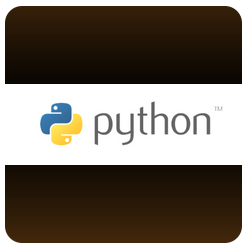
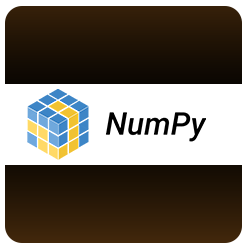

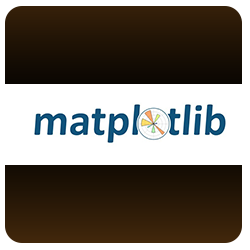
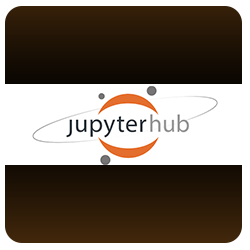
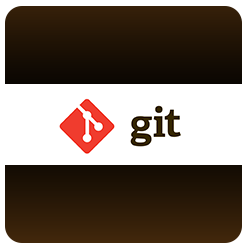





.png)

Watch our free demo class and experience our teaching in Telugu from our Industry experts.
The education offered by Python Life is industrial education. We are known for our course programs. And whatever we teach, it starts from scratch to advanced level. An experienced instructor is available to him 24/7 to clear any doubts.
Yes, all concepts are taught from basic to advanced level and the instructor will check if students understand before moving on to more subjects.
Of course, Python Life trains students according to industry requirements and specifications. We also conduct in-house planning and mock interviews.
There are no eligibility criteria for this course, which is taught from start to finish, so anyone interested in the course can participate.
Yes, you will receive a course completion certificate from Python Life when you submit your project at the end of the course.
Sorry, No refunds.
You can join by paying from our site. Immediately after payment, you will receive a confirmation from us to guide you through the further process.
Yes, all sessions will be recorded and will be provided for the students.

